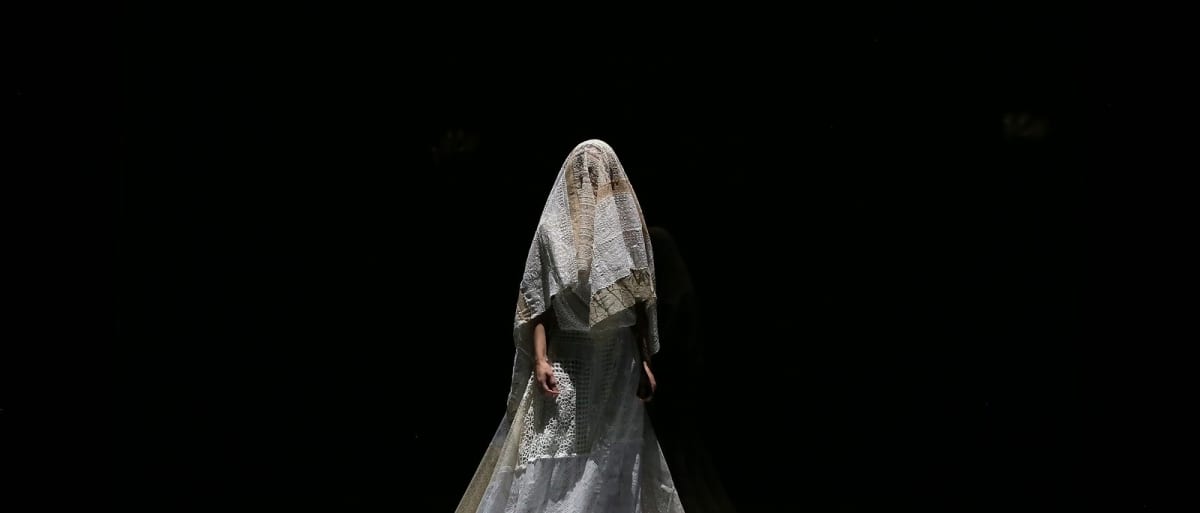Gluck’s contribution to the development of opera is still under-appreciated, straddling as he does the transition between the Baroque and Classical eras in the history of the genre. His stripped down re-workings of Greek mythology aimed to restore to the stage the ‘noble simplicity and calm grandeur of Greek classical culture,’ and take away the more extravagant aspects of eighteenth-century staging in favour of a greater realism. However, the danger is that the results can come over as bland and unadventurous unless there is a decisive intervention by a modern director that nevertheless preserves the spirit of the original intact. Happily Wayne Macgregor succeeds admirably in this production.
He is an admirable choice to take charge of this production, not least because the balletic episodes of the opera are at least as important as the orchestral and vocal elements, and his choreography is beautifully calibrated here to take account of the moods of rage, plangency and peaceful repose that the music illustrates. He and his creative team also have the boldness to use modern video projection, delightfully colourful (even fluorescent) harlequin costumes, and simple scrims and perspex screens to create just the right mixture of abstraction and intimacy that this opera needs if it is to yield its full intensity.
Heading the cast is Alice Coote, who in physique and vocal timbre is ideal casting for the role of Orpheus. Her strong and dark-toned mezzo is exactly right for the moral seriousness of this role where earnest hopes, anger, and despair are never far away. Often on her own on a bare stage her acting embodies the period principle that less is more – just as in the contemporary plays by Racine and Corneille; and nowhere is this better demonstrated than in her performance of the famous lament on death of Eurydice, which in Christopher Cowell’s excellent translations is rendered as ‘Where is love without you near me.’
Alongside her, Sarah Tynan’s Eurydice has fewer spot-lit solo moments, but nevertheless transmits her character’s frustration and isolation with rare skill and emotive force, especially during the tense scene in which they are attempting to ascend from the Underworld, where Gluck’s skill in blending aria and recitative, commentary and narrative is seen at its very best, and where his influence on later composers from Mozart to Berlioz is transparent. The soloists are completed by Soraya Mafi as the embodiment of Love, the deity who intervenes to move the action on to a new dimension. She manages to humanise and flesh-out this abstract role with much more empathy than is usually achieved.
One cannot emphasise enough how each of the many artistic judgments and choices made in this production adds incrementally to the whole effect. It was, for example, entirely right in a house as large as this to use the revised orchestration by Berlioz, which preserves the delicacy of the intimate moments while adding orchestral heft to the more dramatic sections, such as the ‘Dance of the Furies’. Here Harry Bicket really lets the orchestra off the leash to great advantage. Also the video projections at the back of the stage helpfully enhance the action rather than presenting a distraction, as is so often the case. The way to and from Hell is signposted without being overdone, and it is left to the work of the fourteen dancers to evoke the restless torments and blessed repose of the spirits who reside there.
Opera and dance are not always easy companions on the same stage. It is therefore hugely to the credit of this company that the integration achieved here is so seamless and mutually advantageous. The dancers extend and elaborate the emotional conflicts set out in the music in an entirely legible and always graceful way, often adding layers of meaning that are fresh to the listener; for example, the duet between two male dancers in the central section of the ‘Dance of the Blessed Spirits’ made that section stand out far more than is usually the case. Moreover, the singers often weave in and out of the dancers, breaking down the barriers between the media in ways that many other operas that involve dance could learn from.
Opera of this early, pure classical kind, that focuses on the conflict between duty and desire, and yearning aspiration and hard realities, is often hard to communicate with full emotional intensity to a modern audience unschooled in the conventions. Yet the silence and concentration of the Coliseum was sufficient testament to how well this production achieves its goals. While it might seem odd not to begin this season devoted to the Orpheus myths with Monteverdi’s L’Orfeo, this production nevertheless provides a wonderful curtain-raiser that combines originality, daring and respect for tradition in a way that has been seen all too rarely at ENO in recent years.

